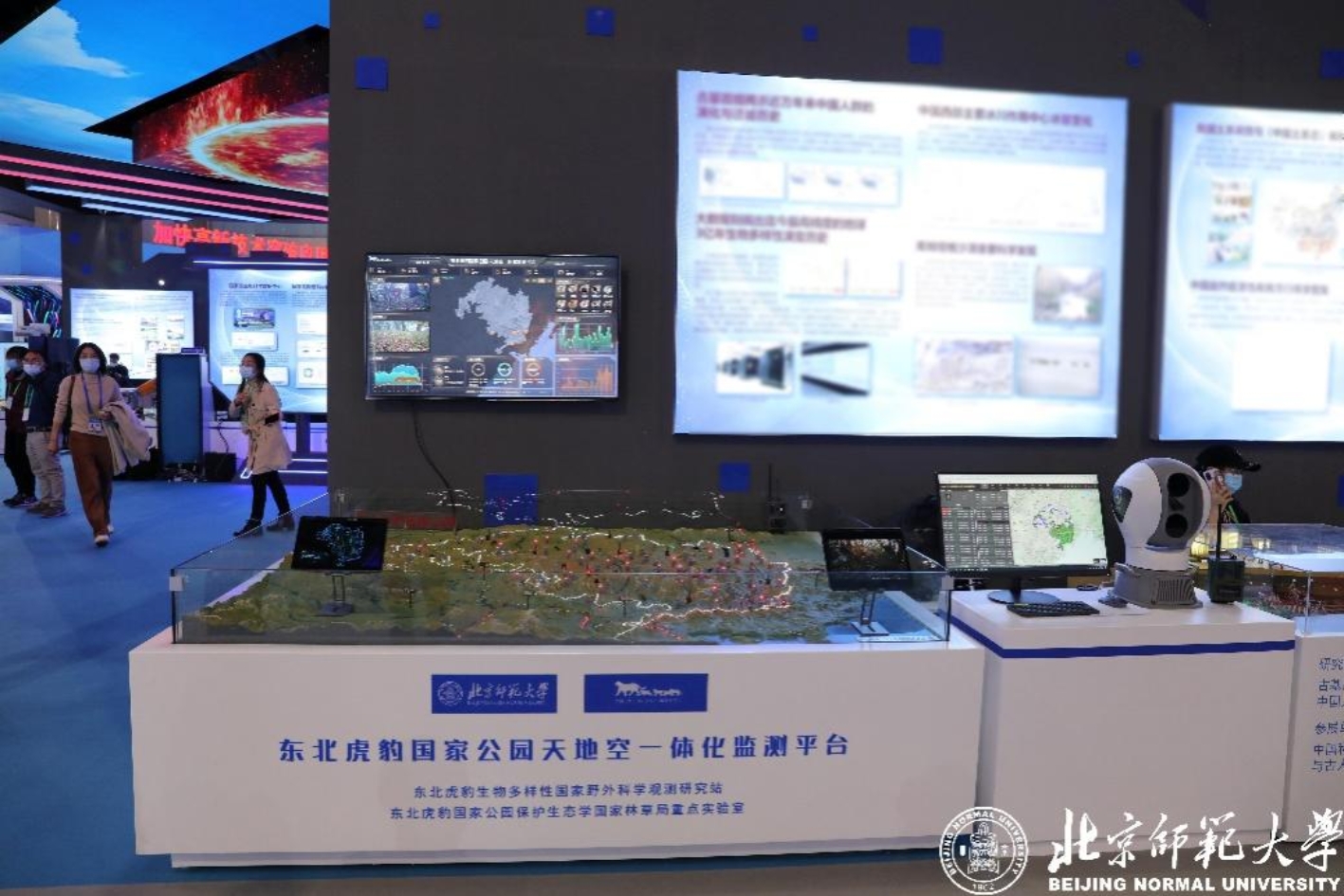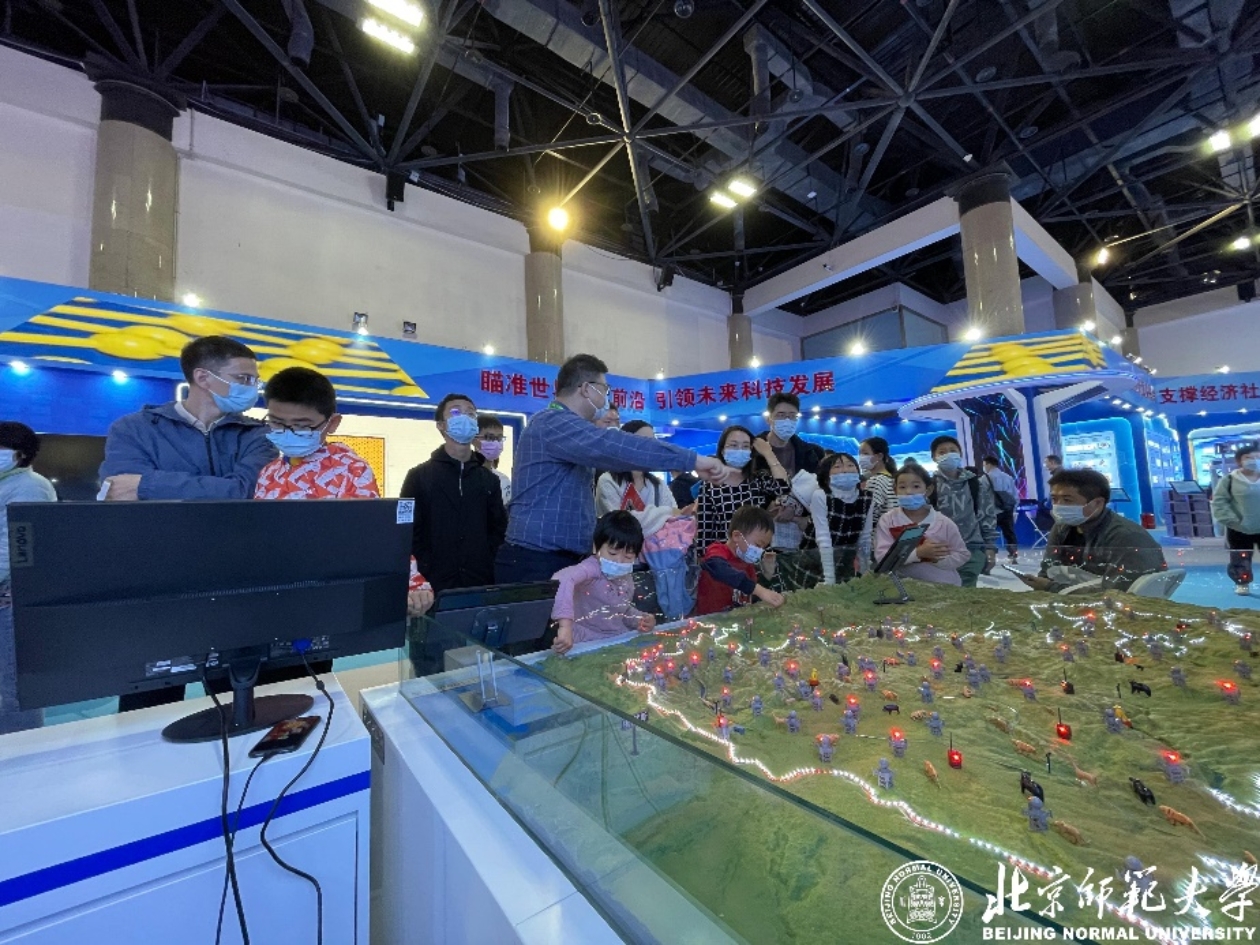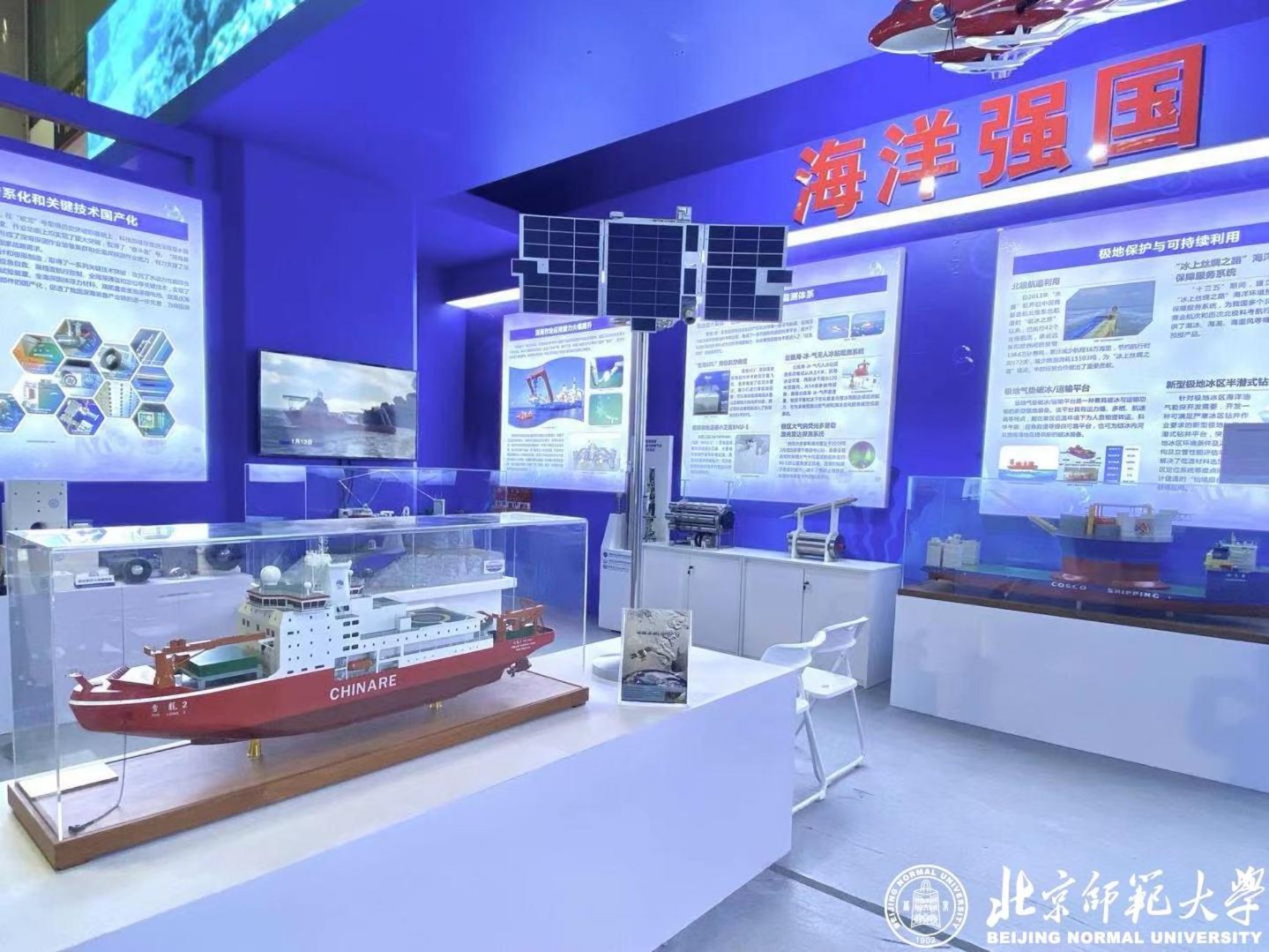BNU achievements displayed on the 13th Five-Year Plan Science & Technology Innovation Exhibition
From October 21 to 27, the 13th Five-Year Plan Science & Technology Innovation Exhibition was held at the Beijing Exhibition Hall. With the theme of “Innovation-driven development towards a scientific and technological nation”, the exhibition set 12 areas, including introduction, centennial retrospect, basic research, high-tech, major projects, agricultural science and technology, and social development. On October 26, when visiting the Exhibition, Chinese President Xi Jinping noted that China had made significant scientific and technological advances during the period. As China embarks on a new journey to build a modern socialist country in all respects, scientific and technological innovation will play a vital role in promoting the country's overall development, he said.


“Space-Ground Integrated Monitoring Platform for the Northeast Tiger and Leopard National Park” and “BNU-1 small satellite” were selected for the exhibition.
Space-Ground Integrated Monitoring Platform for the Northeast Tiger and Leopard National Park


The platform was developed by the National Field Science Observatory for Northeast Tiger and Leopard Biodiversity and the National Forestry and Grassland Administration Key Laboratory for Northeast Tiger and Leopard National Park Conservation Ecology, together with tens of domestic high-tech companies. As the first real-time monitoring system in the world to achieve large-area coverage of biodiversity, the platform installed nearly 20,000 units of wireless infrared cameras and other field monitoring terminals, making possible the full coverage of the 141,000-Sq.km Northeast Tiger and Leopard National Park. This is a great leap from the traditional manpower, point-to-line protection to 24-hour full-scale precise conservation.
As of this September, the system has transmitted and identified more than 20,000 real-time surveillance images of tigers and leopards, and over 8 million of other wildlife and human activities. At present, BNU’s research on biodiversity of the northeast tiger and leopard has formed a complete scientific platform and support system to serve the key demand of the national ecological civilization construction.
BNU-1 small satellite

3D-printed 1:1 model of the BNU-1 satellite
BNU-1 is China's first small satellite dedicated to polar remote sensing observation, designed by Beijing Normal University, China Great Wall Industry Co. Ltd., and Shenzhen Aerospace Dongfanghong Satellite Co. Ltd. As an important part of China's polar stereoscopic monitoring system, BNU-1 is mainly used for polar climate and environmental monitoring and is able to cover the poles within 5 days. Its unique in-orbit exposure technology can ensure the quality of the images obtained. Since its launch on September 12, 2019, it has been in good working order, successfully completing two Antarctic and one Arctic Greenland observation missions. The data has been developed into a double-level product system that is shared with users worldwide.



